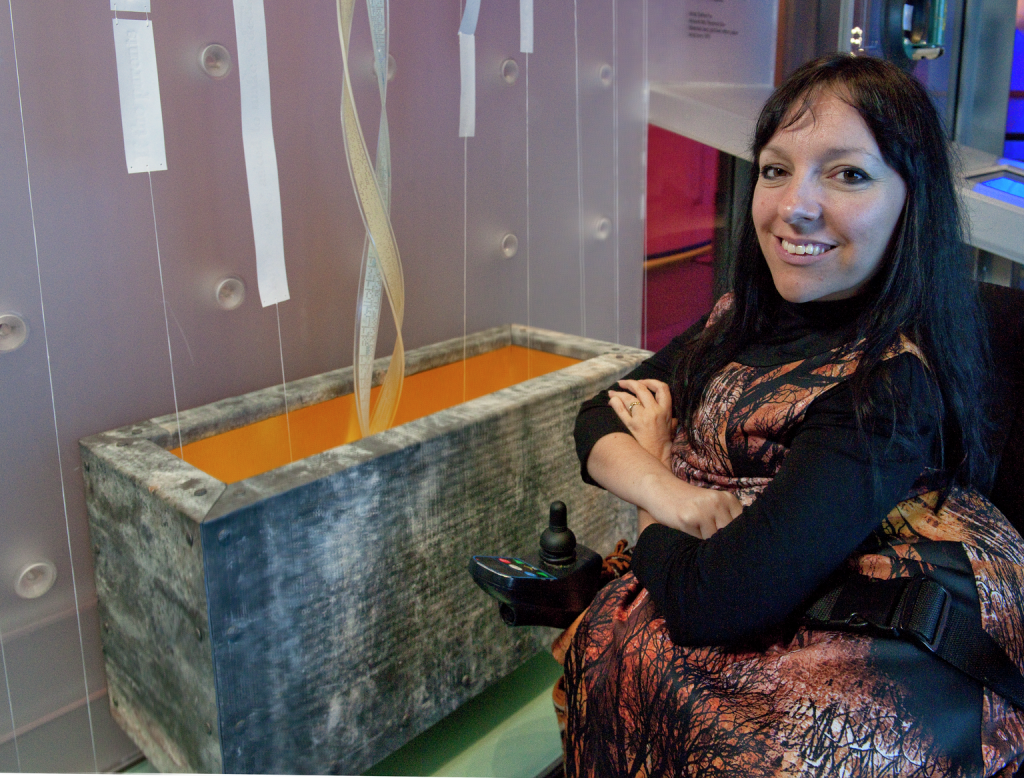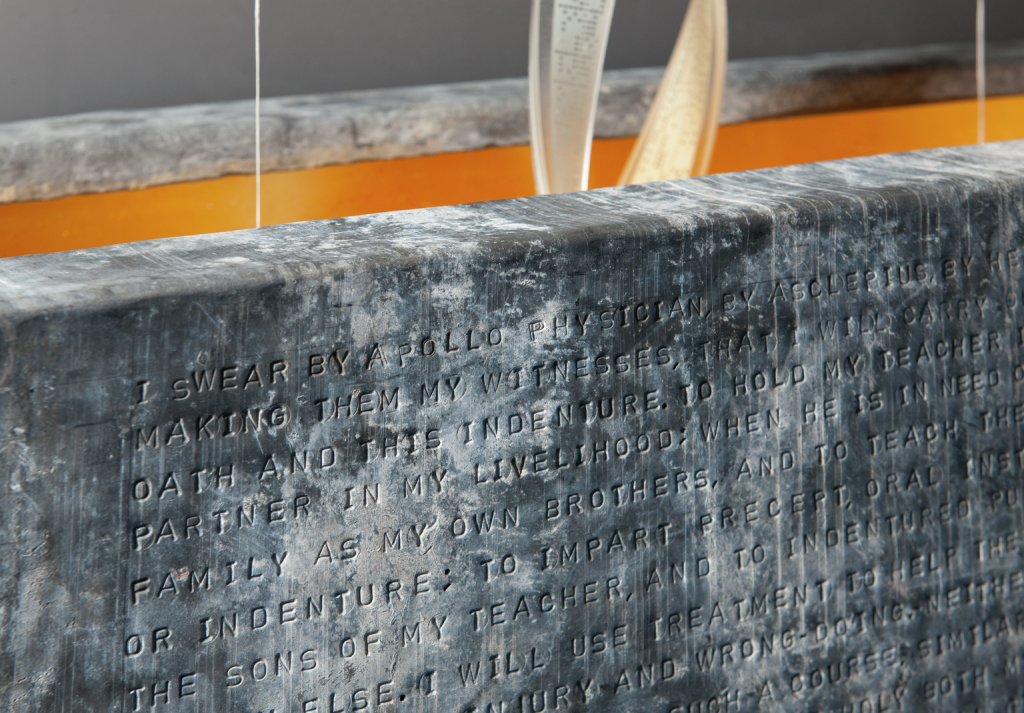In a new piece of work commissioned by the Science Museum, artist Esther Fox explores the ethical challenges associated with pre-natal genetic screening.
Now that Pandora’s Box is installed in the Science Museum’s Who Am I? gallery, I hope to get the public to comment on the piece. I think it is easy to see genetic screening as just “scientific progress” but we don’t take the time to consider that we are not only screening out a genetic condition, we are screening out the person with that condition.
https://www.youtube.com/watch?v=aSiuRKn7wIY
I have a very full life, work full time, am married and am lucky to have a rich and diverse social life with friends and family. Many people are not lucky enough to have these things even if they don’t have a genetic illness. Also I feel my disability is part of my identity, it’s taught me resilience, creative problem solving and the ability to communicate with diverse people. I wouldn’t change that.
I realise that not everyone with a genetic condition may feel the same as me or experience things in the same way. But I’m asking for all of us to take time to consider the wide ranging implications that pre-natal genetic screening would have if it were more widely available. I think it would change our society irrevocably.
I have been interested for many years as to how art can get the public discussing what’s happening around complex ethical issues. Until now I had predominantly been a painter, but in order to express my current thoughts on genetic screening, I wanted to make a piece of sculpture “Pandora’s Box”.

A lead casket is embossed with the ancient Greek Hippocratic Oath. This reminds us of a time when physicians were not only concerned with the physical body but were also philosophers. Pandora’s Box invites us to take time to decipher the text and ponder on it’s meaning as to the value of life.
I’m asking the viewer to reconsider the connection between our medical body and our spiritual essence and what it means to be human. The casket is gilded on the inside with gold leaf, symbolising inner beauty and knowledge. Emerging from the casket is a double helix style twist made from computer punch tape, symbolising the early era of collecting and storing data. Have we now reduced ourselves to a code?
Hanging above the casket are strips of velum. This is calf skin manuscript which has been used over many centuries, for valuable documents such as the Magna Carta. It’s an ancient medium and I chose this material to emboss with excerpts from a study that looked at how people felt about prenatal genetic screening.

I have been working in collaboration with Felicity Boardman, the study’s author, to look at the statements taken from people affected by the genetic condition Spinal Muscular Atrophy. Felicity has been undertaking research into the way experiential knowledge of disability may affect decision making in pre-natal screening. I wanted to produce a piece that represented multiple voices who had taken part in the study.
I believe art has the power to allow thoughtful contemplation as well as express complex emotional subject matter. Has this piece made you think more deeply about the topic? Share your thoughts on Twitter with #geneticscreening.
‘Pandora’s Box’ is on display in the Who Am I? gallery until September 2016. Find out more about how Esther developed the artwork here.